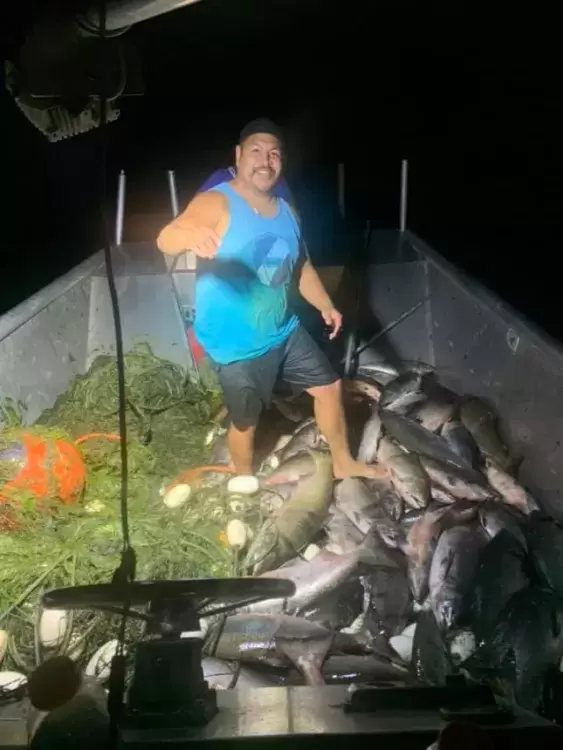The chinook fishery on the Somass River may be half over, but that hasn’t dampened the spirits of Tseshaht fishermen as they gear up to take part in the annual economic opportunity fishery.
Since early September Tseshaht members have taken part in demonstrations, frustrated that DFO hadn’t signed the annual EO (economic opportunity) agreement. Many members rely on the fishery as a source of income and to pay back loans for their boats and gear.
Lauren Girdler of DFO communications stated in an email to Ha-Shilth-Sa that EO agreements are intended to provide food, social, ceremonial and economic opportunities for First Nations, as well as greater certainty to Indigenous communities and other harvesters regarding allocations for salmon species and orderly management of the fisheries.
Tseshaht has been negotiating a new EO agreement with DFO but talks broke down over the course of the summer.
The problem started earlier in the summer when DFO was setting allocations from the Somass River to different user groups. The Tseshaht did not agree with the allocations.
“Tseshaht did not consent to the commercial and recreations fisheries,” wrote Hugh Braker, Tseshaht’s lead negotiator in a July 14 letter to fisheries Minister Bernadette Jordan.
The nation went on to fish sockeye under their Aboriginal right to priority access behind conservation needs. Without a signed EO agreement, they sold their catches on the roadside rather than to commercial buyers.
Both Tseshaht and Hupacasath have, for the past 28 years, fished under EO agreements with DFO.
When the chinook fishery started in late August, both Tseshaht and Hupacasath signed EO agreements but DFO did not sign off of Tseshaht’s agreement. Braker indicated that it was the belief of many Tseshaht that DFO’s refusal to sign a new EO agreement was a form of punishment to the nation for fishing sockeye from their territorial river.
“Since the beginning of negotiations this summer, Tseshaht has become more convinced that the objective of the Department of Fisheries and Oceans is to penalize and punish Tseshaht,” Braker wrote in a Sept. 2 letter to Canada’s fisheries minister, Bernadette Jordan.
Tseshaht stood to lose an estimated $1.25 million in revenue by being barred from catching and commercially selling chinook from their territorial river.
On Sept. 2 a convoy of pick-up trucks arrived at Clutesi Haven Marina, some used to block the boat ramp, preventing sports fishermen from access to the ramp. The protest was just a day or two ahead of Port Alberni’s annual Salmon Derby.
But on Sept. 7 Cynthia Dick, Tseshaht’s elected chief, issued a press release stating that an economic opportunity agreement has been reached between her nation and DFO. The EO agreement will be in place for the remainder of the 2020 salmon fishery and for 2021.
“Although this was a very challenging time for Tseshaht First Nation, we would like to specifically acknowledge our community for uniting and standing together in solidarity for our right to fish and sell what was fought for by many generations before us,” she wrote.
Chief Dick said Tseshaht is committed to working with all stakeholders, sectors, and governments to ensure that future generation are able to enjoy this sacred resource and they manage it in a sustainable way.
Girdler said that DFO is committed to reconciliation and working together with the Tseshaht and Hupacasath First Nations, including future negotiations towards long-term agreements that address the multiple species of salmon that return to the Somass River.







